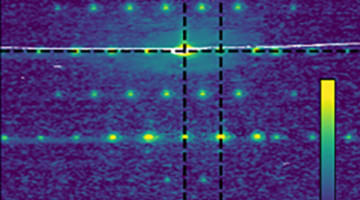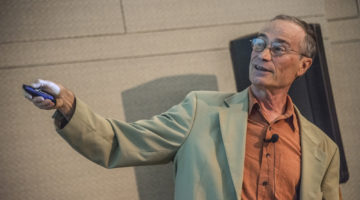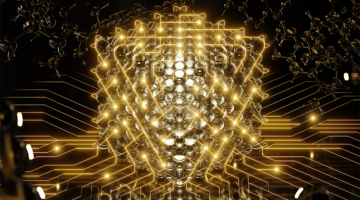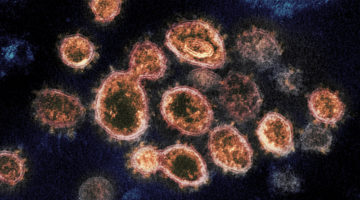Rotavirus, a major cause of infantile gastroenteritis, is responsible for the deaths of about 200,000 children per year. Although vaccines are available, the virus still circulates, and a fuller understanding of the viral structures is needed. Here, scientists investigate the structure and function of the last unsolved rotavirus structural protein. Read more »
Artificial Antiferromagnets Facilitate Studies of Domain-Wall Motion
Researchers fabricated artificial spin lattices that undergo a paramagnetic-to-antiferromagnetic phase transition. These artificial antiferromagnets enable studies of dynamical properties that are critical to understanding, and ultimately implementing, real-world applications such as advanced computing and data-storage technologies. Read more »
2020 Shirley Award to Honor Miquel Salmeron
By taking surface studies from ultrahigh vacuum to near-ambient pressure, Miquel Salmeron’s work at the ALS has had deep impact on a broad range of scientific questions, revealing the chemical, electronic, and mechanical properties of surfaces and interfaces on the nanometer (and often atomic) scale. Read more »
Evaluation of Free Energy Calculations for the Prioritization of Macrocycle Synthesis
Free energy perturbation methods represent a paradigm shift in drug discovery, where computational methods inform benchtop activities. Macrocycles are highly constrained molecules, often resulting in nonintuitive structure–activity relationships requiring lengthy synthetic routes. Free energy perturbation methods can be used to predict potency, guiding synthetic chemistry efforts to de-risk complex synthesis. Read more »
X-Rays Recount Origin of Oddball Meteorites
Reconstructions of 3D patterns of magnetic orientation imprinted in rare meteorites helped resolve questions about their origins. Known as type IIE iron meteorites, they appear to have originated from a parent body that had a composition featuring both fully melted and unmelted parts—other meteorite types display only one composition. Read more »
COSMIC Probes Evolution of Single-Atom Platinum Catalyst
Researchers synthesized a single-atom platinum catalyst that outperformed, by a factor of 15, conventional platinum-based catalysts, which are used for fuel cells and automotive emissions control. Operando x-ray spectromicroscopy at the ALS’s COSMIC beamline revealed how electronic interactions affect the material’s morphology. Read more »
Antiferromagnet Transmits Coherent Spin Waves
Researchers discovered how pure spin currents (also known as spin waves) can be efficiently and coherently transmitted through an electrically insulating antiferromagnetic material. The work represents a notable milestone in the use of antiferromagnetic materials for low-power spintronic devices at room temperature. Read more »![]()
![]()
Battery Breakthrough Gives Boost to Electric Flight and Long-Range Electric Cars
While lithium metal extends an EV’s driving range, it also shortens the battery’s useful life due to lithium dendrites that can cause short circuits. Researchers report a new class of soft, solid electrolytes—made from both polymers and ceramics—that suppress dendrites, before they can propagate and cause the battery to fail. Read more »
Time‐Dependent Cytotoxic Properties of Terpyridine‐Based Copper Complexes
The cover feature picture shows the progressive activation of terpyridine‐based copper(II) compounds that are not cytotoxic against various cell lines after 24 h of incubation but become highly efficient after 72 h of incubation, with IC50 values in the low‐micromolar to nanomolar range. Read more »
Antibody from SARS Survivor Neutralizes SARS-CoV-2
Using structural data from the ALS and cryo-electron microscopy, researchers have characterized how an antibody binds to and neutralizes SARS-CoV-2. This work provides the basis for therapeutic and vaccine development for the SARS-CoV-2 virus, which is responsible for the COVID-19 pandemic. Read more »![]()
![]()
- « Previous Page
- 1
- …
- 41
- 42
- 43
- 44
- 45
- …
- 83
- Next Page »









